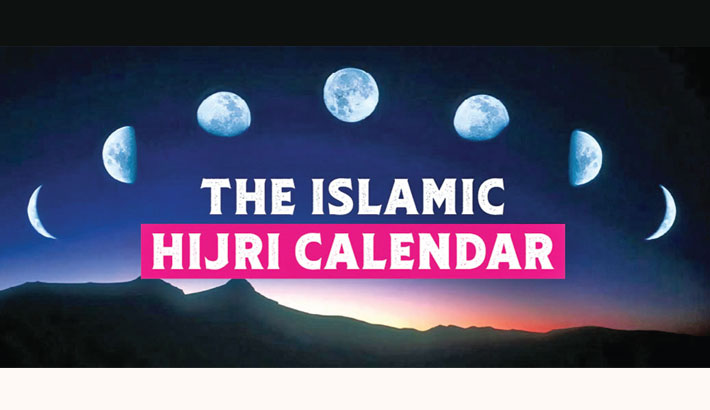The Hijri calendar, also known as the Islamic calendar, is a lunar calendar consisting of 12 months in a year of 354 or 355 days. It is used to determine the proper days of Islamic holidays and rituals, such as the annual period of fasting and the proper time for the pilgrimage to Mecca. The year 1446 in the Hijri calendar corresponds to parts of the years 2024 and 2025 in the Gregorian calendar.
Introduction to the Hijri Calendar
The Hijri calendar is pivotal for Muslims worldwide as it marks significant religious events and rituals. This calendar began in 622 AD when Prophet Muhammad (PBUH) migrated from Mecca to Medina, an event known as the Hijra. The first year of the Islamic calendar was designated as 1 AH (Anno Hegirae – in the year of the Hijra).

Structure of the Hijri Calendar
The Hijri calendar consists of 12 months. These months alternate between 29 and 30 days based on the lunar cycle:
- Muharram
- Safar
- Rabi’ al-Awwal
- Rabi’ al-Thani
- Jumada al-Awwal
- Jumada al-Thani
- Rajab
- Sha’ban
- Ramadan
- Shawwal
- Dhu al-Qi’dah
- Dhu al-Hijjah
Significance of Each Month
Muharram
Muharram is the first month of the Hijri calendar and is considered one of the four sacred months during which warfare is forbidden. The 10th day, known as Ashura, holds special significance as it commemorates the martyrdom of Hussein ibn Ali, the grandson of Prophet Muhammad (PBUH), at the Battle of Karbala.
Ramadan
Ramadan, the ninth month, is the most sacred month for Muslims. It is the month of fasting, prayer, reflection, and community. Fasting during Ramadan, known as Sawm, is one of the Five Pillars of Islam. The Quran was revealed to Prophet Muhammad (PBUH) during this month.
Dhu al-Hijjah
The last month, Dhu al-Hijjah, is significant for the Hajj pilgrimage, one of the Five Pillars of Islam. During the first ten days of this month, Muslims from around the world gather in Mecca to perform the pilgrimage. The 10th day is Eid al-Adha, the Festival of Sacrifice.
Differences Between the Hijri and Gregorian Calendars
The primary difference between the Hijri and Gregorian calendars lies in their basis: the Hijri calendar is lunar, while the Gregorian calendar is solar. This results in the Hijri year being about 10 to 12 days shorter than the Gregorian year. Consequently, Islamic months migrate through the seasons over time.
Importance of the Hijri Calendar in Daily Muslim Life
The Hijri calendar is integral to the religious and cultural life of Muslims. It is used to determine the dates of religious events and holidays, including:
- Eid al-Fitr: Celebrated at the end of Ramadan.
- Eid al-Adha: Marking the end of Hajj.
- Islamic New Year: The first day of Muharram.
Additionally, many Islamic countries use the Hijri calendar for official purposes, such as public holidays and legal matters.
Observing the Hijri Calendar
The Islamic calendar is observed through the sighting of the moon, a practice that brings communities together for moon sighting. This tradition emphasizes the communal and spiritual aspect of timekeeping in Islam.
Calculation and Modern Adaptations
With modern technology, astronomical calculations are often used to predict the start of each month with high accuracy. However, traditional moon sighting is still practiced in many regions to preserve the cultural and religious heritage.
Key Events in Hijri Year 1446
Ramadan 1446
Ramadan in 1446 is expected to begin around March 9, 2025, and end on April 7, 2025. This month of fasting is a time for Muslims to purify their souls, refocus attention on God, and practice self-discipline.
Hajj and Eid al-Adha 1446
Hajj is expected to occur in late June 2025, with Eid al-Adha anticipated around June 27, 2025. These dates mark the culmination of the pilgrimage rites and the commemoration of Prophet Ibrahim’s willingness to sacrifice his son in obedience to God.
Cultural and Social Impact of the Hijri Calendar
The Hijri calendar not only governs religious practices but also influences cultural and social events. Weddings, business contracts, and historical commemorations are often planned according to the Hijri dates.
Educational Influence
Islamic educational institutions often align their academic calendars with the Hijri year, integrating religious events into the curriculum. This alignment helps students understand the significance of these dates in the context of their faith.
Community Engagement
Community events, charitable activities, and social gatherings are frequently planned around significant Hijri dates, reinforcing communal bonds and religious obligations. For instance, the distribution of Zakat (charitable giving) is often heightened during Ramadan.
Conclusion
Understanding and observing the Hijri calendar is essential for Muslims worldwide. It connects them to their faith, community, and history, ensuring that religious practices are carried out at the correct times. As we navigate through the year 1446, it is important to remember the rich history and significance of each month and the events they encompass.

